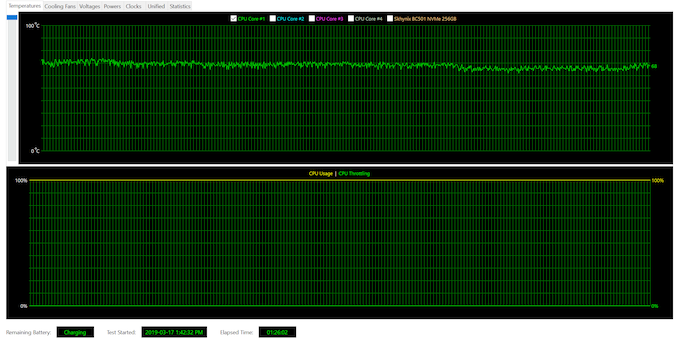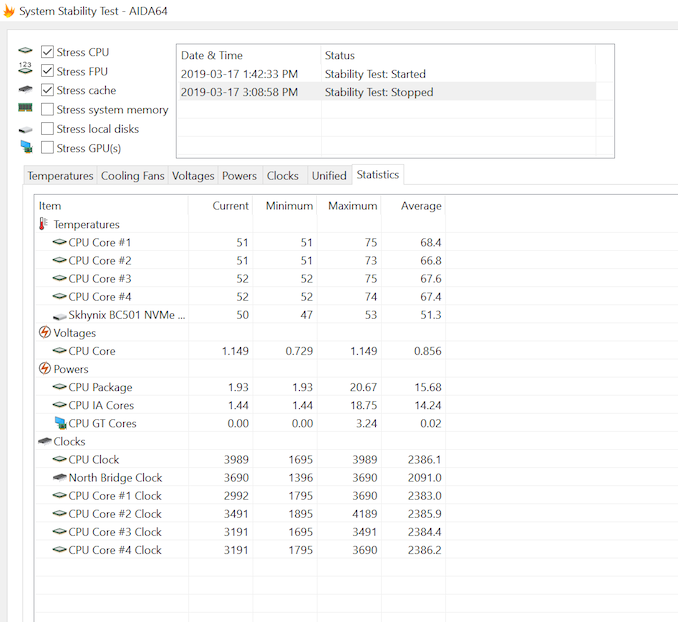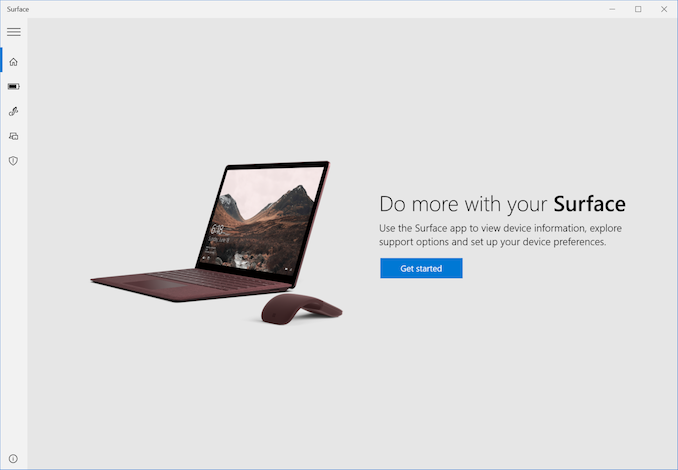The Microsoft Surface Laptop 2 Review: Surface Essentials
by Brett Howse on March 28, 2019 8:00 AM EST- Posted in
- Laptops
- Microsoft
- Surface
- Surface Laptop
- KBL-R
- Surface Laptop 2
Wireless
Everyone talks about the lack of USB-C on Surface, but the really strange question is why does Microsoft still rely so heavily on Marvell for their wireless solutions? Laptop wireless has very nearly become a one-horse game, with Intel being the only major player who continues to update their products annually. As such, the Marvell AVASTAR in the Surface Laptop 2 is just more and more out of date. It was never a great solution to start with, so it’s very odd that they continue to use it all these years later.

Intel’s latest 9260 card is really the wireless adapter to beat in the PC space, offering 160 Mhz channel support, MU-MIMO, and the industry’s best drivers. The good news for Microsoft is that the Marvell solutions have been getting more reliable with some driver updates, but they just don’t offer the level of performance or reliability.
Audio
Microsoft offers an interesting approach to audio in the laptop by placing the speakers underneath the keyboard deck. They refer to this as Omnisonic Speakers, and the result is a win for Surface. You can detect a change in pitch if you put your hands right over the keyboard, but under normal typing there isn’t any noticeable reduction in audio. As a thin and light laptop, don’t expect great things in terms of dynamic range, but at 100% volume the speakers are loud and crisp. Maximum SPL recorded was about 82.3 dB(A) measured one inch over the trackpad.
Thermals
The bane of any thin and light laptop is dissipating heat, so the Surface Laptop 2 was run at 100% CPU load for over an hour to see how it could cope. The Core i7-8650U has a nominal TDP of 15 Watts, although thanks to SpeedShift, on short workloads it can ramp up to over 30 Watts in some devices. In this case, Microsoft seems to have set the PL2 level to about 20 Watts.
We ran the Surface Laptop 2 on a stress test at 100% load for over an hour to see if the device would throttle over time. The answer there is no. Over the hour, the system was able to get rid of enough heat that the temperatures on the CPU never got very high at all. The average temperature over the hour was about 68°C for the duration, and CPU power was right around the 15 Watt level. Maximum power draw was 20.67 Watts right at the start of the test, until the PL2 limit was reached and the device moved into its long-term PL1 load.
The laptop fan never got very loud either, coming in right around 43-44 dB(A) measured one inch of the trackpad, and the Surface Laptop never got too warm to the touch. There’s enough cooling to get the job done without making too much noise.
Software
As a Surface device, Microsoft ships a clean image, or as clean as Windows is these days anyway. The real change here compared to the original Surface Laptop is that Microsoft no longer ships their laptop with Windows 10 S, since the S is now just a feature of Windows. That means you don’t have to unlock all the features anymore, which is good.
The idea behind Windows 10 S was noble. For those not sure what Windows 10 S was, it was a version of Windows 10 that only allowed applications to be installed from the Windows Store. The security benefits here are real, so you can see why they’d want to offer this, but the company has made the right decision in just allowing an S-Mode in Windows 10 itself.
The reality of Windows computing though is that the Windows Store doesn’t offer everything you need, so installing programs is a necessity, so this change is very much welcome. You can get the Surface Laptop with either Windows 10 Home or Pro.













59 Comments
View All Comments
AsParallel - Thursday, March 28, 2019 - link
Microsoft wants to ensure you can't install Linux on it. The entire surface line is garbage for development, meanwhile windows had been bleeding developers by the thousands. The surface dock staunches that bleed by ensuring 0 compatibility.sbrown23 - Thursday, March 28, 2019 - link
But they do provide several different distros for Windows Services for Linux, easily downloadable from the Store.The Average - Saturday, March 30, 2019 - link
Why? Ubuntu 18 works like a charm in my SP3. And being a software developer I can tell you that Surface Pro is really great for that. The only thing I don't like in my SP is Windows which I still can't remove because I use some windows only applications.smilingcrow - Monday, April 1, 2019 - link
And the majority of us just yawn at your Linux drooling.DigitalFreak - Thursday, March 28, 2019 - link
Won't be buying one since they insist on sticking with their stupid Surface Connect Port instead of USB-C or Thunderbolt 3.id4andrei - Thursday, March 28, 2019 - link
No one in the real world cares about USB-C and even less about TB. The single USB-A port is better than a single USB-C port, for now. The Connect port is brilliant and it's good that it's a mainstay on the Surface line.DigitalFreak - Thursday, March 28, 2019 - link
"No one in the real world cares about USB-C"Keep telling yourself that, buddy.
The Average - Saturday, March 30, 2019 - link
I still haven't find a use for a USB-C. All my peripherals are type A. But no matter what port you have in your device you will find yourself buying a usb hub with several USB-A ports to expand that single USB Type A/C port.c4v3man - Thursday, March 28, 2019 - link
USB-C is required for universal docking. Thunderbolt is a great upgrade, that enhances dock reliability and performance in my experience. The Connect Port is a joke, and the ONLY way such a proprietary port would be deemed acceptable is if it fixed standard port flaws, by being far more capable, or more reliable. The Surface Dock is neither of these things, and is just as reliable as a USB-C dock (aka, reliable enough for most but not 100% reliable), but not as reliable as Thunderbolt. Microsoft needs to get with the program ASAP and adopt USB-C at a minimum, and preferably Thunderbolt on at least some of their models. Strike 1.Then again, Microsoft continues to use garbage Wifi chipsets on ethernet-less systems, so the WiFi needs to be the best in the market if they're playing in the premium space. Strike 2.
Finally, systems should be at least mildly serviceable, or otherwise boast "worlds thinnest/lightest/?". Microsoft doesn't boast these things, so 3 strikes... you're out.
Honestly, if they would fix one of these things, I'd consider it. No machine is 100% perfect. But this "unholy trinity" will prevent me from considering any of their machines, short of a surface book 2 (since it has USB-C), however my experience with a detachable display is that I basically never use the feature (1 day a year maybe), so I'd rather have a traditional hinge. So even the surface book 2 isn't much of a contender, but would at least warrant consideration.
Gunbuster - Friday, March 29, 2019 - link
You had to remind everyone about the Avastar ;) Ugg the worst WiFi/Bluetooth in the business.This is rehash what? 30 now? Thirty products in a row Microsoft has used the most buggy and under performing WiFI chipset in the industry...